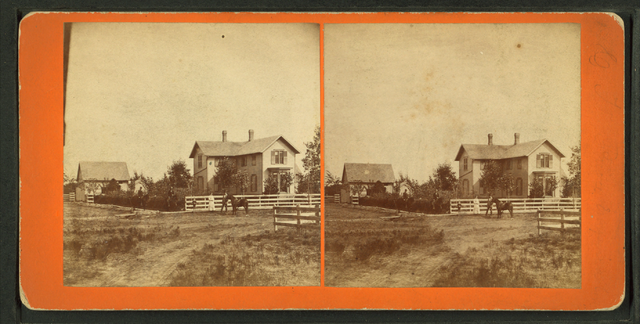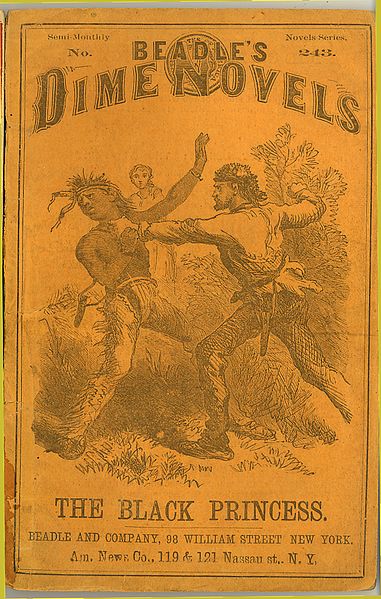Stories of gun men and guns are normally taken dead seriously in the traditional western. Humor and irony may be found in their gallows varieties, and then only in the voices
of one or more characters. But Estleman infuses this entire novel with a wry,
amusing tone.
It takes the
elements of the standard story of the frontier gunslinger and imagines how they
might have been in the case of a single young man. The humor deromanticizes
gunslingers and diminishes the stature that legend gives them. But it’s of a
piece with the droll self-deprecating wit found among westerners, which gives a
subject weight by not being serious about it.
Plot. The novel tells the life story of an Iowa boy
who leaves the farm at the age of twelve and, by chance, shoots a man down
before he turns thirteen. The place being Missouri and the years being the
bloody decade before the Civil War, he is soon running with an anti-abolitionist
militia, and in time we find him in the Old West, with a reputation as Killer
Miller.
We know Miller for
what he is, no smarter than he needs to be and not all that menacing. He’s not
the fastest gun by far but the veteran of numerous gunfights simply by taking
better aim. More or less indifferent to the welfare of others, he’s neither
cold-hearted nor warm-hearted. He’s also no sociopath. Not a bad man, he lacks
redeeming qualities that would make him a “good” bad man.
He is motivated to
kill by little more than everyday self-preservation. Lacking schooling and the
skills needed for most other kinds of employment, his options for making a
living are otherwise limited. In time, he gets work as a regulator for a
stockmen’s association, and like Tom Horn finds himself behind bars.
 |
| Emporia, Kansas |
Style and
structure. The narrative jumps
ahead in leaps and bounds. We find Miller at different points in his life as
militia rider, Union captive, bounty hunter, town marshal, line rider, and
range detective. A suspenseful shootout in the streets of Emporia, Kansas,
harks in its way to the well-known one between the Earps and the Clantons.
The account of this
gun man’s life is narrated as biography, with dates and places and reference to
historical documents. We are told for example, “The first recorded
confrontation between the whiskey runner and the marshal took place in June
1866.” The entire text of personal letters is also included at key points.
As biographies do,
it weighs the credibility of evidence and speculates on interpretations of
incomplete facts. It slips in and out of chronological sequence, alluding to
events that occur much later. At one point it cites the recollection of the
last surviving witness of a gun battle, a child at the time, who lived until 1936.
 |
| Dime novel, 1860 |
Bare fact, in
Eslteman’s treatment of it, is adorned instead with the many forms of irony, a
fictional biography being one of them. Another is the way the telling of the
story slips easily between the historian’s objectivity and the knowing
narration of an omniscient author.
A statement of fact
makes a removed report of an incident grounded in solid reality:
Earl
Weathers’s brother drew a Peacemaker on the ex-defendant on Miller’s way out of
the courthouse and was shot to death by two deputy U.S. marshals standing
nearby. Gouges made by the stray bullets are still visible on the lobby’s
marble walls.
That same narrative
voice is not only privy to Miller’s thoughts and emotions. It also has an
attitude. After killing his second man, an Indian, the youth rides off
exhilarated.
He felt
fresh-born. At the time he confused the feeling with freedom, but in later
years he would come to know it as the inevitable aftermath of having killed.
The novel is rich in
colorful detail as it populates the West with sharply defined characters, each
one of a kind. Nearly everyone is introduced with a full description of their
appearance: clothing, height, build, hair, beard, and eye color. As one
example, we get
a small man
shorter than Miller, in a dark gray suit and black cravat with a steel watch
chain strung across a thickening middle. There was more gray than black in his
close-cropped beard and he had a few steely hairs combed diagonally across a
skull that was otherwise bare. His eyes were a curious light gray.
The detail of height
is frequently made because Miller is shorter than average. Weapons carried are
typically also specified in precise detail. After searching 26 years for one he
likes, Miller finally settles on
a .38 Colt’s
Lightning double-action revolver he had bought from the widow of a sheriff’s
deputy shot down by a drunk he was arresting in Omaha. The whole thing was only
eight-and-a-half inches long, about the length of the barrel of his old
Remington, and he liked that and the reliability of the center-fire cartridges
and the time gained in not having to cock the hammer.
Dialogue is often
laconic and dead honest. Exceptions occur where characters are given to
circumlocutions of understatement, or, as in the case of newspaper editor,
falling under the spell of his own words.
 |
| The Two-Gun Man (1926) |
Wrapping up. Estleman is that rare combination of popular
storyteller and writer’s writer. There’s a whole world of both pleasure and
instruction to be taken in his mastery of the craft. He also does justice to
history. Among other things, his novel concerns the generation of young men who
lived through the Civil War. He also captures something of the social turmoil
that followed that conflict and spilled into the expanding West.
Still, for all that,
the novel is an entertaining play on the legendary West that doesn’t want to be
taken all that seriously. If it were a movie, you could imagine Steve McQueen
in the lead role, an actor who could embody both emotional reserve and intense
determination on screen. Other actors could slip easily into other roles: Chill
Wills and John Goodman in particular.
Gun Man is currently available at amazon,
Barnes&Noble, and AbeBooks. For more of Friday’s Forgotten Books, click on
over to Patti Abbott’s blog.
Further reading:
BITS review of another book by Loren D. Estleman
Image credits: Wikimedia Commons
Coming up: Mollie E. Davis, The Wire-Cutters (1899)

I don't know. Pretty strange if you ask me. :)
ReplyDeleteLoren Estleman is a one-of-a-kind versatile and talented writer. He is able to move back and forth, with ease it seems, between the Western and the crime-mystery-detective genres. He often fictionalizes real historical figures in his Western fiction, people such as Buffalo Bill, the Earps, Jesse James, Judge Parker, etc.
ReplyDeleteOh, did I mention that he is also prolific. Well, he is.
Thank you for the for a very fine review.
Agreed, and I haven't read any of his crime fiction. I have a review coming up for his novel of Buffalo Bill, THIS OLD BILL.
DeleteRon, you have a set of treats awaiting you. His historical crime fiction, set in the early 20th, is unsurprisingly as adept as his western fiction at evoking their settings. And then there're the contemporary novels...
DeleteLoren's characters are usually complex and richly wrought. He does not fall into the trap that is common among so many who write gunman stories, in which the character's entire definition is simply his skill with a firearm. I have often argued that gunfights trump character by reducing a complex human to a skill at arms, and trump a fresh or absorbing plot by reducing story to bullets.
ReplyDeleteEstleman addresses that issue in this novel. He shows that lack of character depth in the man.
DeleteRon, I'm glad you reviewed this novel for I read it only a few months ago and liked it very much. It was also my first book by Loren D. Estleman. I was struck by the description of Killer Miller which you have covered in the beginning. It deserved mention for I don't recall reading about too many "heroes" like Miller in westerns. Another unusual western hero I remember is the one-armed ex-Confederate soldier in "Hard Texas Winter" by Preston Lewis.
ReplyDeleteRon, I'd like to add here that I enjoyed reading your interview with Mr. Wheeler as also the review of his book "Eclipse: A Novel of Lewis and Clark". While I admit to not having read any of Mr. Wheeler's books yet, I have a keen fascination for historical western novels and intend to read some of his novels soon.
In the handful of his westerns I've read, Estleman's characters are likely to be anti-heroes.
DeleteI've enjoyed Loren Estleman's crime fiction. I have a number of his westerns but haven't gotten around to reading them.
ReplyDeleteI like the idea of wry wit in a western, though I don't think I'd like full-on humor. Unless, of course, it's Blazing Saddles.
ReplyDeleteI'd probably call that farce.
DeleteI have "Black Powder, White Smoke" of Estleman on the shelf. A multiple Spur Award winner, I like his westerns.
ReplyDeleteI have a couple more Estleman reviews coming up: THIS OLD BILL, THE MASTER EXECUTIONER (excellent), THE ADVENTURES OF JOHNNY VERMILLION
DeleteHi There,
ReplyDeleteThank you for sharing the knowledgeable blog with us I hope that you will post many more blog with us:-
Buddies carts is a west coast cannabis brand that represents considerable authority in Liquid Diamond Live Resin vape cartridges.
Email:sales@big-smokes.com
Click here for more information:- more info